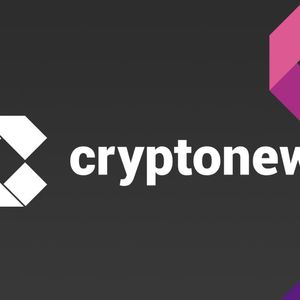BitcoinWorld Ethereum Lending Protocols Achieve Historic $22.6 Billion Active Loans Boom The world of decentralized finance (DeFi) is buzzing with monumental news! Ethereum lending protocols have just shattered previous records, reaching an astonishing $22.6 billion in total active loans. This unprecedented surge, highlighted by crypto data platform Token Terminal, isn’t just a number; it’s a clear indicator of the burgeoning trust and utility within the Ethereum ecosystem and the broader crypto finance landscape. What Are Ethereum Lending Protocols and Why Do They Matter? At its core, an Ethereum lending protocol is a decentralized application (dApp) built on the Ethereum blockchain that facilitates borrowing and lending of cryptocurrencies without the need for traditional financial intermediaries like banks. Think of it as a peer-to-peer marketplace where users can lend out their digital assets to earn interest or borrow assets by providing collateral. These protocols are a cornerstone of the DeFi movement, offering a more open, transparent, and accessible financial system. They operate on smart contracts, self-executing agreements with the terms of the agreement directly written into code. This automation reduces human error, increases efficiency, and removes the need for intermediaries, making transactions faster and often cheaper. Their importance stems from several key aspects: Accessibility: Anyone with an internet connection and an Ethereum wallet can participate, regardless of geographical location or credit history. Transparency: All transactions are recorded on the public blockchain, providing an immutable and verifiable audit trail. Efficiency: Automated smart contracts enable near-instantaneous loan origination and repayment, eliminating bureaucratic delays. Yield Generation: Lenders can earn passive income on their idle crypto assets, while borrowers gain access to liquidity without selling their holdings. The Staggering Surge in Active Loans: A Deep Dive into $22.6 Billion The recent announcement from Token Terminal, shared widely on X, confirms that total active loans on Ethereum-based platforms have indeed reached a historic peak of $22.6 billion. This figure represents a significant milestone, showcasing robust demand for decentralized credit and the increasing maturity of the DeFi sector. This remarkable growth isn’t attributed to a single entity but rather a collective effort from several leading protocols that have consistently innovated and expanded their offerings. Here’s a look at some of the key players driving this unprecedented volume: Protocol Name Key Features / Role in Growth Aave A decentralized non-custodial liquidity protocol for earning interest on deposits and borrowing assets. A pioneer in flash loans. Spark Protocol A lending protocol from MakerDAO, designed to enhance liquidity and efficiency within the ecosystem, often integrating with DAI. Morpho An optimization layer for existing lending protocols like Aave and Compound, improving rates by matching lenders and borrowers directly. Maple Finance Specializes in institutional-grade uncollateralized lending, bridging traditional finance with DeFi for creditworthy entities. Fluid Protocol Focuses on providing liquidity solutions and lending services, often catering to specific market needs. Compound One of the original and most influential algorithmic money markets on Ethereum, enabling users to earn interest or borrow assets. Euler Finance A permissionless lending protocol allowing users to lend and borrow almost any ERC-20 token, with advanced features like isolated markets. Goldfinch A decentralized credit protocol that allows for uncollateralized crypto loans, bringing real-world credit to the blockchain. Curve Finance Primarily known for stablecoin swaps, but also offers lending pools that contribute to the overall liquidity landscape. Gearbox Protocol A composable leverage protocol that allows users to take on leverage for various DeFi activities like yield farming and trading. Silo Finance A lending protocol that creates isolated lending markets for specific assets, mitigating risks associated with broader market volatility. The diversity of these platforms, from fully collateralized to undercollateralized and institutional-focused models, highlights the evolving sophistication of the active loans market on Ethereum. Unlocking Potential: Understanding DeFi’s Broader Impact The growth of DeFi , driven significantly by lending protocols, represents a paradigm shift in how financial services are delivered. It’s not just about loans; it’s about reimagining the entire financial system to be more inclusive, efficient, and transparent. The underlying principles of DeFi—decentralization, transparency, and permissionless access—are challenging the status quo of traditional finance. Beyond lending, DeFi encompasses a wide array of services, including: Decentralized Exchanges (DEXs): For trading cryptocurrencies directly peer-to-peer. Stablecoins: Cryptocurrencies pegged to stable assets like the US dollar, crucial for reducing volatility in DeFi transactions. Yield Farming and Staking: Strategies to earn rewards by providing liquidity or securing networks. Decentralized Insurance: Protecting users against smart contract bugs or other risks. Prediction Markets: Platforms for betting on future events. The substantial volume of active loans underscores the increasing utility and demand for these decentralized financial instruments. It signals a growing confidence among users and institutions in the security and viability of blockchain-based financial products, paving the way for wider adoption. Navigating the Landscape of Crypto Finance: Benefits and Considerations The burgeoning sector of crypto finance offers compelling advantages that are attracting both retail and institutional participants. However, like any emerging financial frontier, it comes with its own set of considerations and risks that users must be aware of. Key Benefits: Global Access: Anyone, anywhere, can access financial services without geographical barriers or extensive paperwork. Lower Fees: Often, transaction fees can be lower compared to traditional banking, especially for international transfers. Faster Transactions: Blockchain technology enables near-instantaneous settlement of transactions, unlike traditional banking which can take days. Innovation: The permissionless nature fosters rapid innovation, leading to new financial products and services. User Control: Users retain full control over their assets, reducing reliance on third-party custodians. Important Considerations and Challenges: Volatility: Cryptocurrency prices can be highly volatile, impacting the value of collateral and borrowed assets. Smart Contract Risk: While robust, smart contracts are not immune to bugs or exploits, which could lead to loss of funds. Liquidation Risk: In collateralized lending, if the value of your collateral falls below a certain threshold, it can be automatically liquidated. Regulatory Uncertainty: The regulatory landscape for crypto finance is still evolving, posing potential risks. User Error: Lack of proper understanding or mishandling of private keys can lead to irreversible losses. Engaging with crypto finance requires due diligence, a thorough understanding of the protocols involved, and robust risk management strategies. The Future Horizon: What’s Next for Ethereum and Its Lending Ecosystem? The record-breaking performance of Ethereum lending protocols is not just a snapshot of current success but also a strong indicator of future potential. The ongoing evolution of the Ethereum network, particularly with the transition to Ethereum 2.0 (now known as the Merge and subsequent upgrades like Shanghai and Cancun), is set to further enhance its capabilities and support even greater scale in DeFi. Key developments shaping the future include: Scalability Improvements: Layer 2 solutions and sharding (future implementation) will significantly increase transaction throughput and reduce gas fees, making lending and borrowing more accessible and cost-effective for a broader user base. Enhanced Security: Continued audits and community vigilance will strengthen the security posture of protocols, building greater trust. Institutional Adoption: As regulatory clarity improves and specialized products emerge, more traditional financial institutions are likely to enter the Ethereum DeFi space, bringing substantial capital and further legitimizing the ecosystem. Real-World Assets (RWAs): The tokenization of real-world assets (like real estate, invoices, or commodities) on Ethereum could open up entirely new avenues for lending and borrowing, bridging the gap between traditional finance and DeFi. Cross-Chain Interoperability: As bridges and interoperability solutions mature, seamless movement of assets across different blockchains could expand the reach and liquidity of Ethereum-based lending. The path ahead for Ethereum and its vibrant lending ecosystem appears promising, poised for continued innovation and growth as it reshapes the global financial landscape. Actionable Insights for Navigating the DeFi Lending Space: Educate Yourself: Understand the basics of blockchain, smart contracts, and specific lending protocols before committing funds. Start Small: Begin with smaller amounts to get comfortable with the process and risks. Diversify: Don’t put all your assets into a single protocol. Monitor Your Positions: Especially for collateralized loans, keep a close eye on market volatility and your liquidation thresholds. Utilize Security Best Practices: Use strong, unique passwords, enable two-factor authentication, and consider hardware wallets for storing significant assets. Stay Informed: Follow reliable crypto news sources and protocol updates to be aware of any changes or potential vulnerabilities. The remarkable achievement of Ethereum lending protocols hitting $22.6 billion in active loans is a powerful testament to the maturity and immense potential of decentralized finance. It underscores a growing global appetite for accessible, transparent, and efficient financial services. As the Ethereum ecosystem continues to evolve and innovate, its lending landscape is set to play an even more pivotal role in shaping the future of finance, offering unparalleled opportunities for both lenders and borrowers worldwide. This isn’t just a fleeting trend; it’s a foundational shift towards a more open and inclusive financial paradigm. To learn more about the latest Ethereum trends, explore our article on key developments shaping Ethereum institutional adoption. This post Ethereum Lending Protocols Achieve Historic $22.6 Billion Active Loans Boom first appeared on BitcoinWorld and is written by Editorial Team















